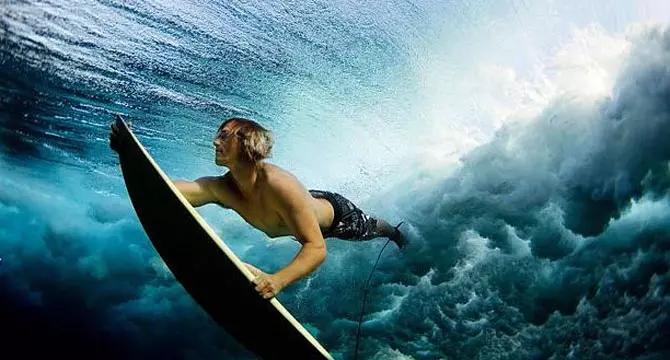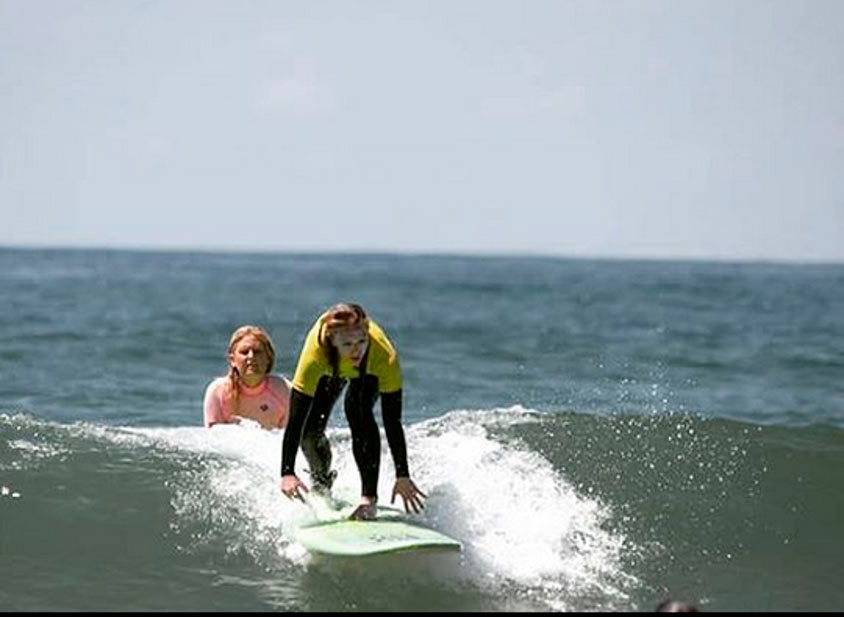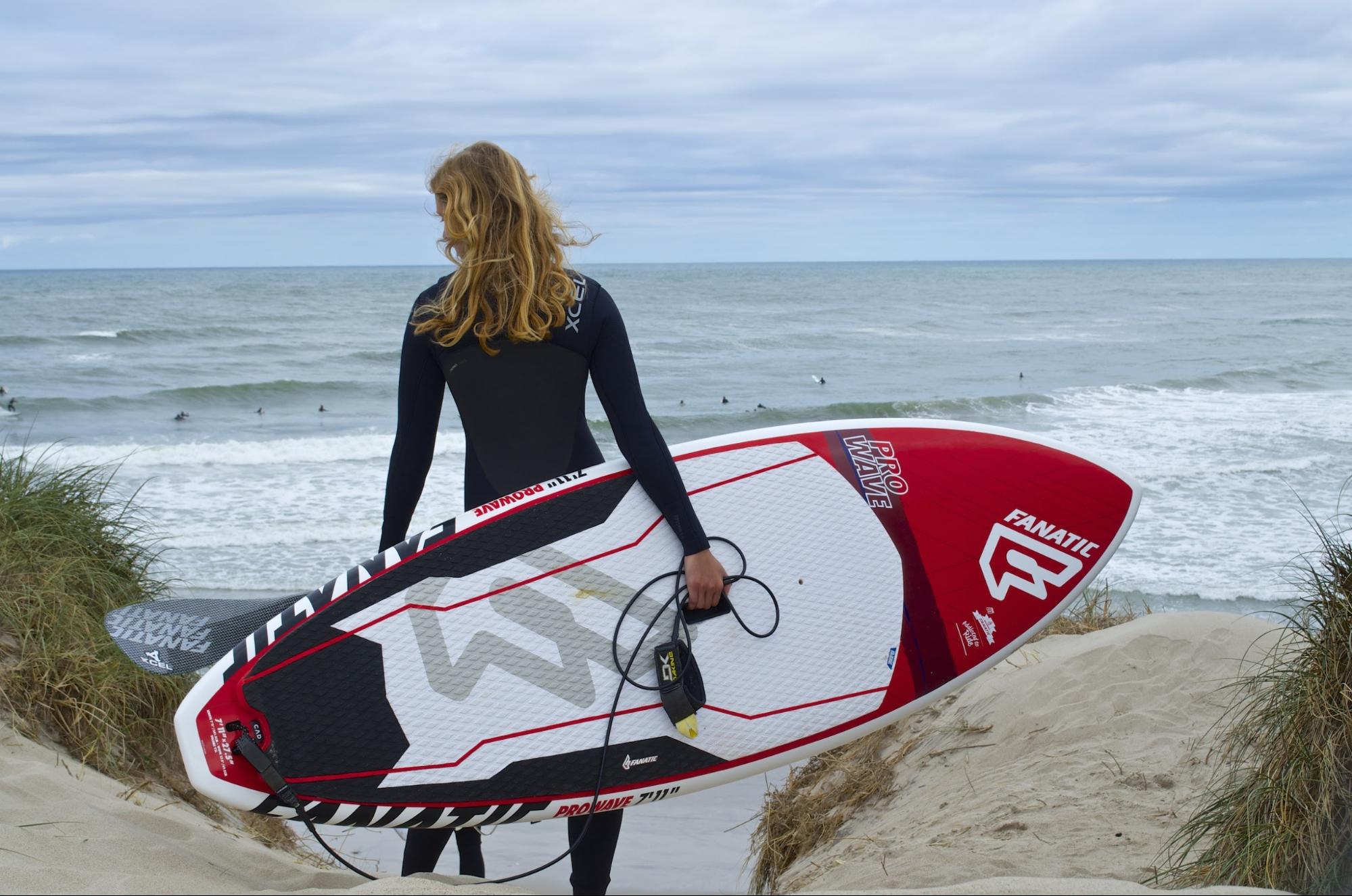What's the best way to learn to surf? There are many options, but we believe that the most effective one is to go on a surfing tour where you can intensively ride the waves for one or two weeks and really get into it. To truly start surfing, it takes two weeks. In the first week, you will ride the waves, have a bit too much fun, and meet a lot of people, and in the second, you will be ready to seriously learn surfing.
Three main ways to learn to surf
- The theory of surfing. A surfer uses their knowledge of the ocean and conditions to calculate where they can perform maneuvers on the wave, as well as knowledge about equipment to get the most out of riding. The influence of sea currents and wind plays a significant role in shaping the waves and conditions for surfing. It's important to understand how these factors affect the waves to choose the right place and time for riding, especially for beginners. For beginners, it's better to choose spots with small, soft waves and calm conditions.

- Surfing skills. There are two important things you must master to learn to ride the waves:
- Applying theory in practice. This is the ability to decode and quickly assess where and how to ride the wave.
- Motor coordination abilities. Here you will learn to use your body correctly and move optimally for riding the waves. This includes mastering the "pop-up" and maintaining balance on the wave. Avoid common beginner mistakes, such as standing up on the board too early or incorrect body positioning. Exercises to develop balance and arm strength will also help you progress in surfing.
- Learning values and safety. This is about respect for others, respect for the environment, and knowing how to behave towards others while riding. For example, it's important to know who has the "right of way" on the wave to avoid accidents. Familiarize yourself with the basics of marine safety and first aid for surfing-related injuries, such as bruises, cuts, and fractures. Always keep an eye on the weather conditions and warnings to avoid dangerous situations.
The ideal option is to ride with an experienced friend or at a surf school when you first learn to surf. Surfing is really great, but it's important to be honest with yourself about your abilities. Since this sport is practiced in the ocean, it can be dangerous for both yourself and others if you try to ride in conditions you're not yet ready for.
Why choose a surf school?
Surf schools / Surf camps are a quick way to learn to ride the waves. Surfing lessons are conducted by competent and experienced surfers in safe and controlled conditions. You'll learn about the dangers, weather, and other things you need to know before you really start this sport.
It's also important to study the tides and currents, and you can always ask your instructor to show you how to read wave forecasts and other important things. It's also good to get instructions on choosing waves when you want to move from white waves to green (breaking) ones. If you look at the picture of the girl below, this was her first green wave.

When choosing a surf school, pay attention to the qualifications and experience of the instructors, the size of the groups, location, and equipment. A good instructor should be able to explain techniques in a clear and accessible language and create a safe and friendly atmosphere for learning.
Which surfboard should you start riding on?

In surf camps, you can simply rent a beginner board, but if you want to buy a surfboard, you should also opt for a beginner (soft) board. It's longer and wider, so beginners find it easier to gain enough speed to catch the waves.
Beginner boards have greater buoyancy, which makes them more stable and easier to stand on. Sure, looking cool with a short board under your arm is great, but surfing is not about being cool. It's about having fun and catching as many waves as possible. So avoid the mistake of buying too small a board.
Caring for your equipment
Proper care for your surfboard and other equipment will extend their lifespan and ensure safety while riding. Here are some tips for caring for your surf gear:
- Rinse your surfboard thoroughly with fresh water after each session to remove salt and sand. This prevents corrosion and wear.
- Wipe the board with a dry cloth and store it in a cool, dry place protected from direct sunlight.
- Regularly check the board for cracks or other damage and repair them in a timely manner.
- Keep your wetsuit and other textile equipment clean, rinse with fresh water and dry after use.
- Handle leashes and other hardware carefully, store them separately from the board to avoid scratches.
Proper care for your equipment not only extends its life but also ensures your safety and comfort while riding.
Health and fitness for surfing
Surfing is a physically demanding sport, so it's important to maintain good physical shape. Here are some fitness and nutrition recommendations for surfers:
- Strength training - Strengthen your arm, leg, and core muscles for better stability and balance on the board.
- Endurance training - Cardio workouts will help you endure long sessions in the water.
- Balance exercises - Practice balance exercises on a balance cushion or board to improve stability.
- Nutrition - Stick to a balanced diet with enough protein, slow carbs, and healthy fats for recovery and energy.
- Hydration - Drink plenty of water before, during, and after surfing to compensate for fluid loss.
Good physical condition not only improves your surfing technique but also reduces the risk of injury. Regular training and proper nutrition will help you get the most enjoyment out of this exciting sport.
